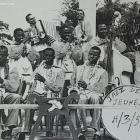ADVERTISEMENT
kanaval
Haitian women enjoying Kanaval 2015
Haitian women enjoying Kanaval 2015
Carnival History in General & Haiti Carnival History
Carnival (also known as Kanavalin Haitian Creole) in Haiti started in the year of its declaration of independence in 1804. Haiti celebrates many carnivals throughout the year, however, its main carnival (Kanaval) starts on January 6th, on the twelfth day after Christmas leading up to Mardi Gras and serves as a final shebang before the 40-day abstinence of Lent. The day of 'Mardi Gras' is the day before the Ash Wednesday, and that is always 46 days before Easter. The three immediate days before the Ash Wednesday, a final celebration is hosted grandly in Haiti especially in Port-au-Prince and Jacmel. These three days are known as "les trois jours gras," or, "three fat days". The country celebrates this carnival with colorful grand parades of floats with elaborate costumes. There are musical competitions, cultural shows, and display of specific characters in the parades dedicated to the Carnival, are some of the major highlights of this annual event.
Haitian Kanaval fanenjoying Kanaval 2015
Haitian Kanaval fanenjoying Kanaval 2015
This Catholic festival has been imported to Haiti and other parts of the Americas by the early European settlers. In Haiti, the carnival is heavily influenced by local customs and rituals like Voodoo and Haitian music. People take part in parade floats where music systems are set up on trucks. Participants perform comedy acts often satirizing political topics. Music always remain the central part of the celebration. Popular Kompa bands like Djakout #1, T-Vice, Sweet Micky take part along with other lesser known bands, groups, who get good public exposure during the occasion.
Haitian Kanaval 2015, Life, Love and Happiness
Haitian Kanaval 2015, Life, Love and Happiness
Mardi Gras Costume History Vs Haiti Mardi Gras Costume
The celebration of Mardi Gras allows the Roman Catholics a period of merrymaking before the 40 days of lent. The celebration of Mardi Gras includes wearing masks and colorful costumes, dancing, music competitions, parades, etc. In the beginning, the earliest form of Mardi Gras costumes were centered around the practice of masking--obscuring the face to retain anonymity. However, in 1837, when the first organized parade came to the streets, the tradition of masking came under fire as the disguised bandits started acts of robbery and violence behind their covered faces. In 1857, the 'Comus Krewe' first introduced the concept of organized theme parade with decorated floats comprising fully costumed characters and that gradually became more and more widespread and extravagant. Mardi Gras costumes are primarily meant for adults.
Haitian Kanaval 2015, Life, Love and Happiness
Haitian Kanaval 2015, Life, Love and Happiness
Mardi Gras History & Facts as it Relates to Haiti Mardi Gras
Within the final week, the last three days are the main attraction of the celebration and are known as "les trois jours gras," or, "three fat days." The Carnival week is celebrated in a sophisticated manner with extravagant formal galas organized by many governmental offices, schools, musicians, or other organizations. Everyone wants to take part in the President's Ball where the President of Haiti crowns the Carnival King and Queen.
Face to face contact with Haitian culture during the Kanaval
Be in face to face contact with Haitian culture during the Kanaval
Haiti celebrates this festival with colorful grand parades of floats with elaborate costumes. There are musical competitions, cultural shows, and display of specific characters in the parades dedicated to the Carnival are some of the major highlights of this annual event. "Carnival" is pronounced as "Kan-a-val" by the Haitians. The day of 'Mardi Gras' is the day before the Ash Wednesday, and that is always 46 days before Easter. The final celebration is hosted grandly in Port-au-Prince and Jacmel and it is also celebrated to certain smaller scales in smaller Haitian provinces. Popular Haitian musicians release new albums specially created for the occasion. It is an opportunity for making political statements as well. The craftsmen from the art capital of Haiti or Jacmel prepare beautiful papier-mâché masks and costumes that represent religious or ghoulish creatures and often mocked political figures.
Haiti Kanaval 2015
Haiti Kanaval 2015
As per historians' records, the celebration of Mardi Gras was first started with the ancient Romans with the celebration of the festival known as "Lupercalia", worshipping the god of fertility and the god of agriculture and pastoral shepherds. Their celebrations always had Mardi Gras-like similarities--feasting, drinking and enjoying the "pleasures of the flesh". 'Mardi Gras' is a French word that literally means 'Fat Tuesday.' It was introduced in the America by the early French settlers. Mardi Gras is a big holiday time in Haiti when all the schools and businesses remain closed. The purpose of celebrating Mardi Gras is to enjoy of food, drink and fun before the beginning of fasting for the Catholic holiday Lent, as a way to indulge before the Lenten season. It begins on January 6th, the twelfth day after Christmas and serves as a final shebang before the 40-day abstinence of Lent.
Le Peuple S'Amuse - Haiti Kanaval 2015
Le Peuple S'Amuse - Haiti Kanaval 2015
These floats, regardless of the genre of the Krewe, share some commonalities-- they are always colored in traditional Madri Gras colors of gold, purple and green. Every year, the Krewes take out new signature floats with revamps and touch-ups while some floats are created with the new theme of the season. In New Orleans, float riders are required by law to have a mask on. There is a tradition to carry 'Flambeaux' (flame torch). The tradition of throwing beads with predetermined colors started with the king in 1872. Purple for justice, gold for power and green for faith. Each year, a Rex or the King of the Carnival is chosen by 'Rex Organization' and a symbolic key of the town is handed over to him by the city Mayor.
Haitian Carnival is not same as Mardi Gras. It is a celebration held over several weeks before each year, leading up to end with the celebration of Mardi Gras. In addition to the main carnival, Haiti has smaller carnival celebrations (Rara, Koudyay, Carnaval des Fleurs, Kompa carnival, etc.) throughout the year which are different from the main carnival.
The biggest Street Party - Haiti Kanaval 2015
The biggest Street Party - Haiti Kanaval 2015
Although the exact date of the first celebration of Madri Gras in New Orleans is unknown, but as per record, the first Mardi Gras parade was held in New Orleans in 1837 and the first parade of floats on Feb. 24, 1857 by the Krewe of Comus. When people think of Madri Gras in New Orleans, the first thing that comes into mind are its incredible colorful floats that brings the festival parades into life. Since its first appearance in New Orleans, the floats of Madri Gras, day by day, have become progressively more detailed, complex and spectacular. The occasion generates $840 million annually with a number of recorded attendance of 1.4 million. However, for safety reasons, the city authority of New Orleans has restricted the heights of the floats to a maximum of 18 feet to avoid hitting traffic lights, but without restricting their lengths. Some of the biggest floats in the city, like "Leviathan", "Bacchus" are more than 50 feet long!
Port-au-Prince hosts one of the largest Mardi Gras carnival in the Caribbean and North America. Each year the city explodes in vibrant color, light and festive music. These celebrations are each year funded by the government, wealthy Haitian families and businessmen.
Port-au-Prince en Fete - Haiti Kanaval 2015
Port-au-Prince en Fete - Haiti Kanaval 2015
Mardi Gras Float History Compared to Haiti Carnival Float
"Mardi Gras" or "Fat Tuesday" (as it is symbolized by consuming all forms of fat during the celebration) in Haiti is always an exciting display of Haitian people; their creativity, art, religion, music and culture. It is the day before the Ash Wednesday, and that is always 46 days before Easter. In Haitian Creole, a "Madigra" is an ugly or masked person during the Haiti carnival season. Haiti with a vast and diverse cultural heritage background, associates itself with many diverse beliefs and practices. In spite of many ups and downs in its political and economic paroxysms, Haiti celebrates diversified rituals, traditions and customs drawn from vast and diverse cultural heritage of French, Spanish and African traditions as well as its Caribbean island culture. Other than a celebration, it is one of Haiti's limited sources of revenue, as well.


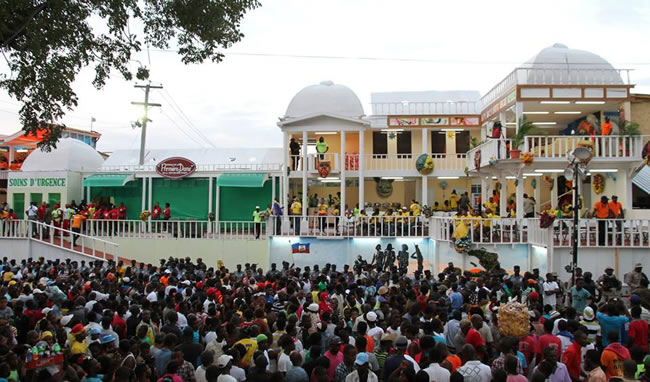
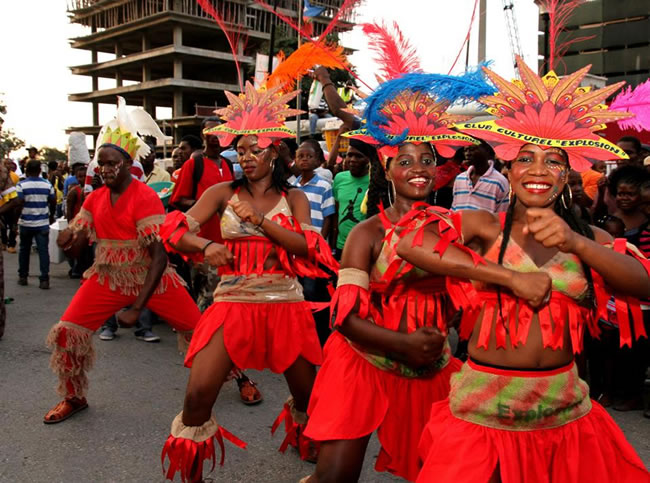
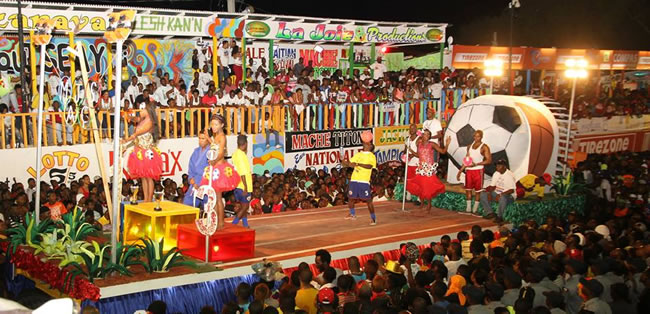
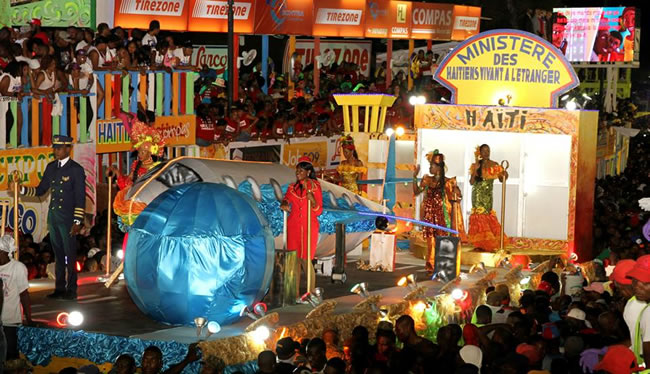
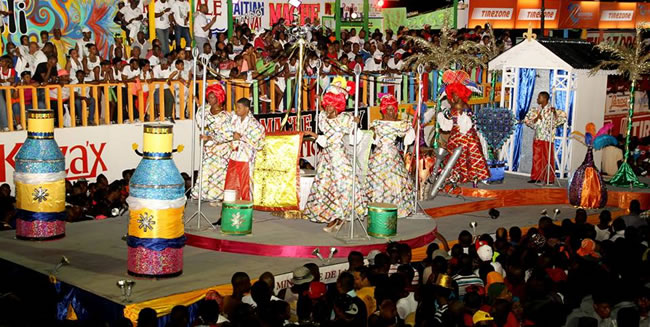
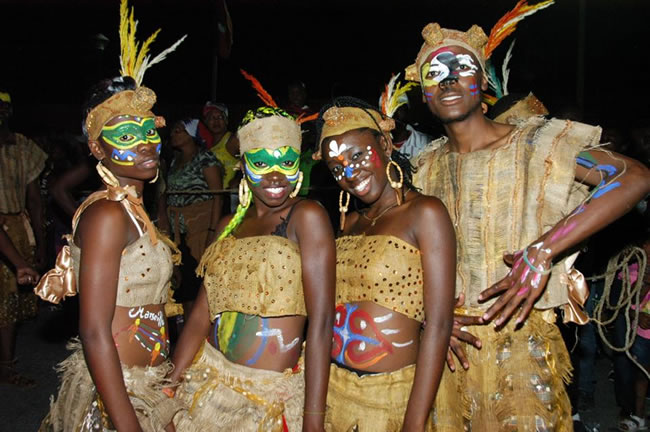
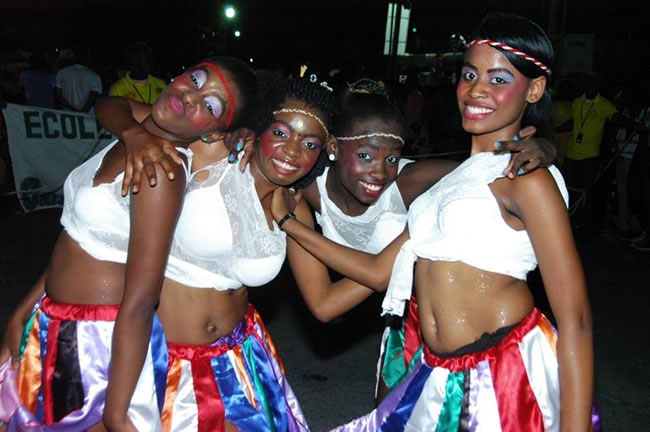
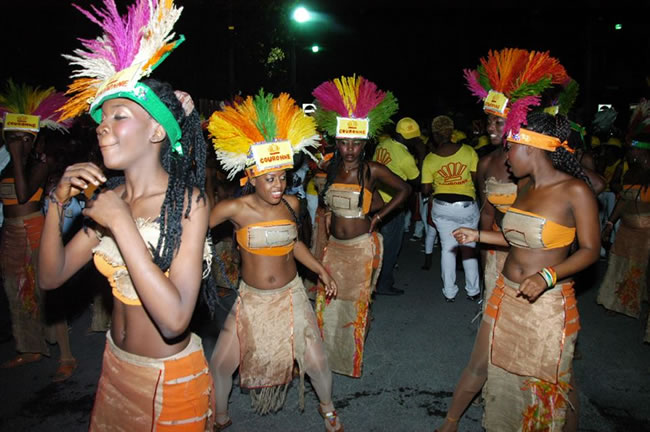
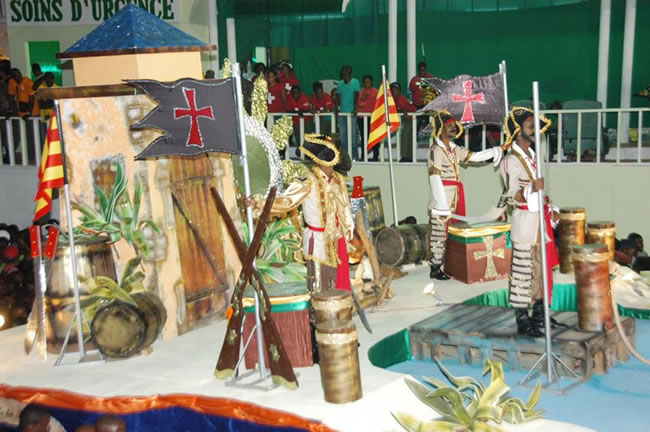
 Hotel Beck in Cap-Haitien, Haiti
Hotel Beck in Cap-Haitien, Haiti  View of road in Lumane Casimir Village
View of road in Lumane Casimir Village  Inauguration Lycée Jean-Louis Dulciné in Gris-Gris, Haiti
Inauguration Lycée Jean-Louis Dulciné in Gris-Gris, Haiti  Haitiano-Japanese Naomi Osaka wins the US Open against Serena...
Haitiano-Japanese Naomi Osaka wins the US Open against Serena...  Jovenel Moise, the president has spoken. Period
Jovenel Moise, the president has spoken. Period  Pope Francis appointed Mgr. Launay Saturne Archbishop of...
Pope Francis appointed Mgr. Launay Saturne Archbishop of...  Port-au-Prince on fire over gas prices hike
Port-au-Prince on fire over gas prices hike  Partial list of privileges enjoyed by Government officials in...
Partial list of privileges enjoyed by Government officials in... 
